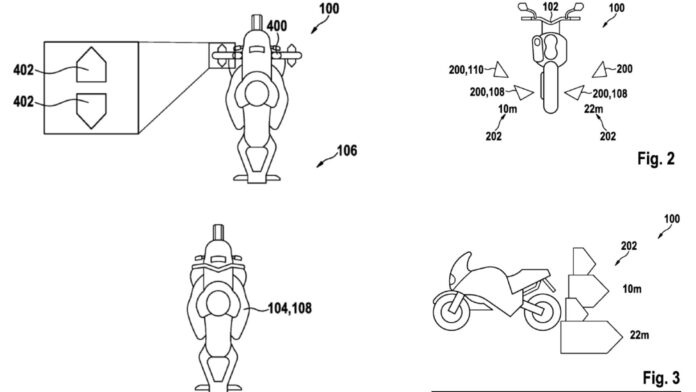If you’re a frequent group rider, you know how crucial it is to maintain formation and communication. Traditionally, this has meant using hand signals or relying on advanced comm systems like those from Cardo or Sena. But now, Bosch is stepping into the game with a new tech that could revolutionize group riding safety.
Bosch’s New Patent: What Is It?
Bosch has recently filed a patent for a control device aimed at group riding. This system uses a variety of sensors—radar, lidar, or cameras—to pinpoint the members of your riding group and distinguish them from other vehicles on the road. Whether you’re riding with motorcycles, cars, trucks, or even quad bikes, this tech aims to keep everyone in sync.


How Does Bosch’s Group Riding System Work?
Although the patent doesn’t specify the exact type of sensor, it details how the system will function. Sensors on the motorcycle feed data into an onboard module, which then provides the rider with information through a human-machine interface. This interface could be the bike’s display or a connected comms unit, showing the positions of group members.
Improving Safety and Reducing Distractions
One of the key goals of Bosch’s system is to minimize the need for riders to constantly check their rearview mirrors. By focusing on the road ahead, riders can maintain better situational awareness and improve overall safety. The system could also integrate with the bike’s controls, similar to advanced driver assistance systems in cars. For instance, it might use adaptive cruise control to help riders keep pace with the group and provide haptic, auditory, or visual feedback if they stray too far from the formation.
The Role of Advanced Rider Assistance Systems
Modern motorcycles are increasingly equipped with advanced rider assistance systems (ARAS). These systems range from adaptive cruise control, which automatically adjusts speed, to lane-keeping assist, which alerts riders if they veer off course. Bosch’s new tech fits into this trend, aiming to enhance the riding experience while prioritizing safety.
The Debate: Do We Need More Tech on Motorcycles?
With the influx of technology in motorcycling, there’s a growing debate among enthusiasts. Some argue that these innovations are essential for elevating the riding experience and ensuring safety. Others feel that motorcycles should remain simple and free from the overwhelming tech that dominates cars.
Potential Downsides: Cost and Complexity
One major concern is the potential cost of these advanced systems. High-tech features can be expensive to repair, adding to the overall cost of motorcycle ownership. Additionally, there’s the question of reliability. More tech means more components that could potentially fail, leading to costly repairs.
The Future of Group Riding Safety
Despite these concerns, it’s clear that Bosch’s new system could offer significant benefits for group riding safety. By providing real-time data and integrating with the bike’s controls, this tech could make group rides smoother and safer. However, it will be essential for manufacturers to balance the introduction of new technology with the core values that make motorcycling appealing—freedom, simplicity, and connection with the road.
Conclusion: Balancing Tech and Tradition
As technology continues to advance, the challenge will be to integrate these innovations in a way that enhances the riding experience without detracting from the essence of motorcycling. Bosch’s new group riding tech has the potential to be a game-changer, but only time will tell if riders will embrace it or prefer to keep things simple.
Join the Conversation
What do you think about Bosch’s new group riding system? Is it a necessary advancement for safety, or just another piece of tech that could go wrong? Share your thoughts in the comments below and let’s discuss the future of motorcycle safety.





































